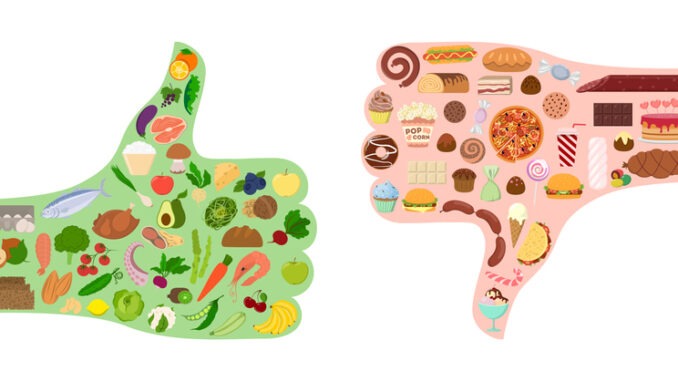
Thomas Rouyard, post-doctoral fellow, and colleagues discuss use of the ‘boosting’ approach as an alternative to ‘nudging’ in developing non-coercive interventions to promote good health
CREDIT: This is an edited version of an article that originally appeared on The BMJ
The idea of using nudges to change behaviour, introduced by Thaler and Sunstein in 2008, sparked great enthusiasm in policy-making communities, including those promoting public health. ‘Nudges’ are interventions designed to steer people towards better choices through subtle changes to their environment, such as making unhealthy food less accessible in cafeterias in order to promote a healthier diet. They can encourage behaviour change without the use of regulations (such as bans) or financial incentives (such as taxes), making them particularly appealing to policy-makers. More than a decade on, many governments and international organisations have established ‘Nudge Units’, or have developed behavioural influencing policies.
Yet, despite generating considerable attention, the effects of nudges on health-related behaviours are not always clear. While nudges are quite good at motivating one-off behaviours – such as getting vaccinated or attending for a health check – their effects on more complex, continuing behaviours – such as the self-management of chronic conditions – remain unclear. In addition, long term studies are still lacking for many nudging techniques, and new evidence suggests that some nudges may not be as effective as originally thought when implemented outside experimental settings.
Nudges are said to be rooted in libertarian paternalism—a framework conceived to improve people’s wellbeing while preserving their freedom of choice; however, critics have challenged these claims, arguing that nudges can undermine liberty and autonomy, generating heated debate around their legitimacy. Alternative approaches to behavioural policy and interventions have been proposed, some of which avoid these ethical concerns. One such approach potentially well-suited to health promotion is called ‘boosting’. It was conceptualised by philosopher Till Grüne-Yanoff and psychologist Ralph Hertwig on the premise that human decision-making is at odds with some of the assumptions underpinning the nudging approach.
What are ‘boosts’?
Just like nudges, boosts are interventions aimed at influencing people’s decisions without coercing them or changing their economic incentives; however, while nudges do this by subtly changing the choice environment, boosts equip people with the skills or tools needed to make better choices themselves.
Take, for example, people with yearly gym memberships who fail to exercise regularly despite genuinely wanting to do so. This apparent conflict between inner values and actual choices – which can incur economic and health costs – can be explained by a common tendency to overvalue immediate rewards (such as watching television instead of exercising) compared with future, bigger rewards (such as reaching a healthy weight).
While there is still uncertainty around what causes this tendency, similar patterns occur when people want and need to follow diets, take medication, or undergo screening.
The boosting approach assumes that, in many cases, people can learn to detect and overcome these cognitive errors, thereby over-ruling seemingly irrational choices. For example, teaching people ‘temptation-bundling’ strategies can boost their self-control and increase gym attendance. Such strategies consist of simultaneously pairing a behaviour that provides delayed rewards (such as exercise) with a pleasurable indulgence (such as watching television), so that the former becomes more instantly gratifying.
How do ‘boosts’ differ from ‘nudges’?
Both nudges and boosts address seemingly irrational decisions resulting from human reasoning, and both build on psychological and behavioural insights – in fact, some interventions, such as putting nutrition labels on the front of packaging – arguably qualify as both nudges and boosts; however, the two types of intervention typically work in different ways.
Unlike boosts, nudges redesign so-called choice architecture and create environments that harness people’s cognitive or motivational deficiencies to prompt choices in largely non-conscious ways – for example, switching from an opt-in to an opt-out policy for organ donation relies on people’s tendency to prefer inaction over action (known as the status quo bias) resulting in higher rates of organ donor registrations.
To illustrate the difference, think of interventions to reduce smoking rates. A nudge could consist of reducing the visibility of tobacco products in stores to mitigate the effect of smokers’ ‘attentional bias’ for tobacco-related cues. This strategy is both libertarian (smokers can still buy tobacco) and paternalistic (the environment is modified to prompt them not to buy tobacco). Alternatively, a boost strategy might consist of teaching smokers meditation techniques that increase self-control over nicotine cravings.
Boost, nudge, or both?
Empirical evidence on the relative benefits and harms of boosting remains limited. The seminal paper was published only five years ago, although some earlier interventions have since been classified as boosts. While various boosts have been shown to promote health-related outcomes, effects may vary over time and across target populations and behaviours. What matters in the end is which interventions achieve enduring changes in behaviour without violating widely held values such as autonomy and agency.
Importantly, boosting shows promise in protecting people from the detrimental effects of ‘unhealthy’ nudges already present in the environment, from the fast food or gambling industries, for example. Assuming that the boosted skills effectively overcome cognitive biases, people may become less prone to malign nudges that rely on such biases. However, by neutralising the biases that make people susceptible to nudges, boosts may reduce the opportunity for effective nudge policies, should they be required as nudging always leaves open the option for boosting, but vice versa is not the case.
The key challenge, then, is to determine those situations best-suited to boosting or nudging. Nuanced policy-making should not consider either of these behavioural policy tools a silver bullet, or systematically prefer one over the other. More research is required to explore the benefits of both types of intervention in different settings and populations, and also over the long term.
In the meantime, boosts should be considered a useful additional tool for both health policy-makers and clinicians.


Be the first to comment